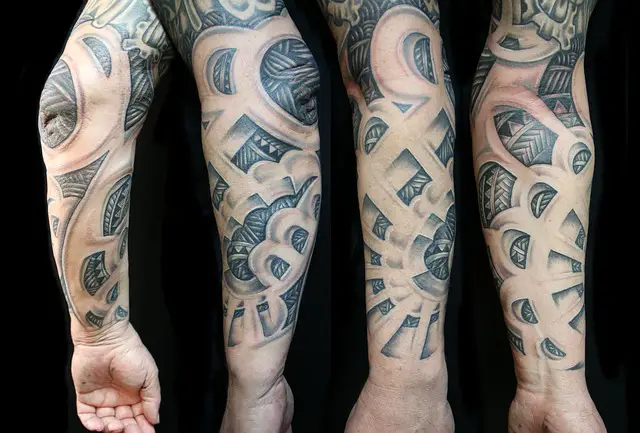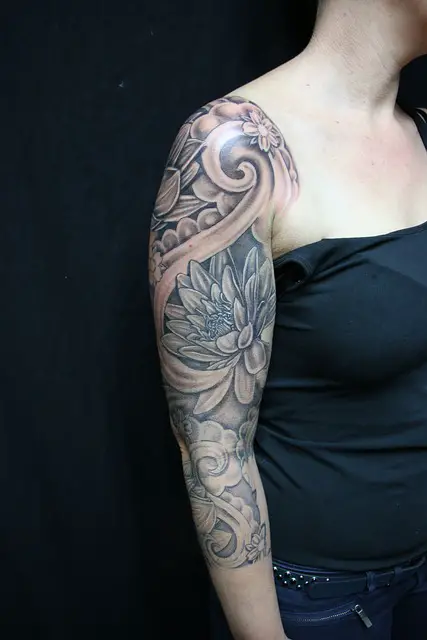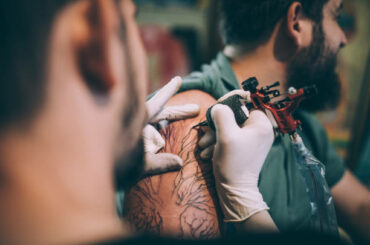Contents
Chapstick on tattoo
Proper aftercare is paramount for the longevity and vibrancy of tattoos, considering their nature as intricate works of art etched into the skin. As enthusiasts embark on healing a freshly inked masterpiece, a common question often arises: Can ChapStick, a product renowned for its moisturizing properties, be a suitable addition to tattoo aftercare tools? In this exploration, we delve into the importance of aftercare in the tattoo healing process and address the curiosity surrounding the use of ChapStick on tattoos.

Tattoo Aftercare Basics
Tattoos, although stunning works of art, are essentially open wounds during the initial stages of the healing process. Understanding this fundamental aspect is crucial to ensuring the optimal recovery and preservation of the tattoo’s integrity.
Cleanliness and moisture emerge as pivotal factors in the aftercare equation. Keeping the tattooed area clean minimizes the risk of infection and supports the body’s natural healing mechanisms. Simultaneously, maintaining an appropriate level of moisture is key to preventing excessive dryness, which could impede the healing process and affect the final appearance of the tattoo.
Tattoo artists often provide explicit recommendations for aftercare, typically endorsing specific products designed to cater to the unique needs of healing tattoos. These traditional aftercare products play a significant role in nourishing the skin, preserving the colors, and promoting the overall well-being of the tattooed area. As we delve into the world of tattoo aftercare, these fundamental principles serve as the guiding light for enthusiasts seeking the best possible outcome for their inked creations.
ChapStick and Its Role in Tattoo Aftercare
As individuals seek alternatives for tattoo aftercare, the consideration of using ChapStick often arises. This exploration into ChapStick’s potential role in aftercare involves a multifaceted analysis, addressing both its benefits and potential drawbacks.
ChapStick, known for its moisturizing properties, is often considered a convenient option for those without immediate access to traditional tattoo aftercare products. However, a closer examination of its ingredients reveals a formulation primarily designed for the lips rather than the unique needs of healing tattooed skin.
The thick consistency of ChapStick, while effective for lips, may pose challenges when applied to a tattooed area. This thickness could potentially hinder proper airflow to the tattoo, creating an environment that might compromise the healing process. Moreover, some individuals may exhibit sensitivity to certain ingredients present in ChapStick, raising concerns about adverse reactions.
Potential drawbacks must be considered in conjunction with any perceived benefits. While ChapStick may contribute to moisture, its use on tattoos necessitates a cautious approach to ensure that the healing environment remains conducive to optimal recovery. As we navigate the realm of ChapStick in tattoo aftercare, it becomes essential to weigh the convenience against potential drawbacks and make informed decisions that prioritize the health and vibrancy of the inked masterpiece.

Balancing Moisture in Tattoo Healing
Achieving and maintaining the right moisture balance is a critical aspect of successful tattoo healing. Striking this delicate equilibrium ensures that the tattooed skin remains hydrated without veering into an excessively moist environment that could impede the healing process.
Emphasizing the significance of maintaining optimal moisture levels is essential for preventing issues such as excessive dryness, scabbing, and potential damage to the tattoo. Moisture plays a pivotal role in promoting the elasticity of the skin and preserving the vividness of the ink.
As enthusiasts consider ChapStick as a potential contributor to moisture balance, a thoughtful evaluation is necessary. While ChapStick is designed to provide moisture to the lips, its suitability for tattooed skin requires scrutiny. Assessing its effectiveness in maintaining the right level of moisture without tipping the balance towards excessive dampness is crucial.
Caution is advised against creating an overly moist environment during the tattoo healing process. An excess of moisture can compromise the natural healing mechanisms, potentially leading to complications such as delayed healing, color distortion, or increased susceptibility to infections. In this delicate dance of moisture regulation, enthusiasts must tread carefully, ensuring that the healing environment is conducive to the tattoo’s overall well-being.

Considerations and Recommendations
Summarizing the considerations surrounding the use of ChapStick on tattoos brings clarity to the decision-making process for enthusiasts navigating the delicate phase of aftercare.
Firstly, it is essential to acknowledge the potential benefits and drawbacks of employing ChapStick in tattoo aftercare. Considering factors such as its moisturizing properties and the unique needs of healing tattoos aids in making an informed decision.
However, enthusiasts are strongly encouraged to prioritize and follow the specific recommendations provided by their tattoo artist. These recommendations are tailored to the individual tattoo, taking into account factors such as size, location, and intricacy. The artist’s expertise ensures that the aftercare regimen aligns with the specific requirements of the freshly-inked design.
In instances where uncertainties persist or if individuals have unique skin considerations, seeking professional guidance becomes paramount. Consulting with a healthcare professional or a tattoo artist can provide personalized insights into aftercare practices, ensuring that the healing journey is tailored to individual needs.
In conclusion, while ChapStick may offer certain benefits, it is crucial to approach its use on tattoos with a comprehensive understanding of the considerations involved. By summarizing these key points and emphasizing the importance of professional guidance, enthusiasts can navigate the aftercare process with confidence, ensuring the optimal healing and preservation of their cherished tattoos.

Conclusion
In the realm of tattoo aftercare, the potential use of ChapStick introduces a nuanced conversation, presenting both benefits and considerations that enthusiasts must carefully weigh.
To recap, the benefits of ChapStick lie in its moisturizing properties, offering a convenient option for those without immediate access to traditional aftercare products. However, this convenience comes with a set of considerations, including potential drawbacks related to its formulation and the risk of skin sensitivity.
The priority, above all, remains the health and vibrancy of the tattoo. As we conclude this exploration, it is essential to underscore the significance of informed and cautious aftercare practices. While ChapStick may play a role in contributing to moisture balance, enthusiasts must approach its use with a thorough understanding of the potential impacts on the healing process.
Emphasizing the importance of following the tailored recommendations of the tattoo artist is paramount. Their expertise ensures that the aftercare regimen aligns with the unique characteristics of the tattoo, optimizing the healing journey.
In the grand tapestry of tattoo aftercare, informed decision-making, personalized guidance, and a commitment to maintaining optimal moisture levels collectively contribute to the overall success of the healing process. As enthusiasts embark on the journey of preserving their inked creations, a thoughtful approach ensures that the final result is not just a tattoo but a masterpiece that stands the test of time.





